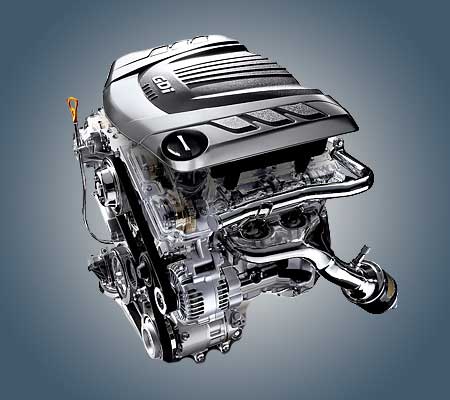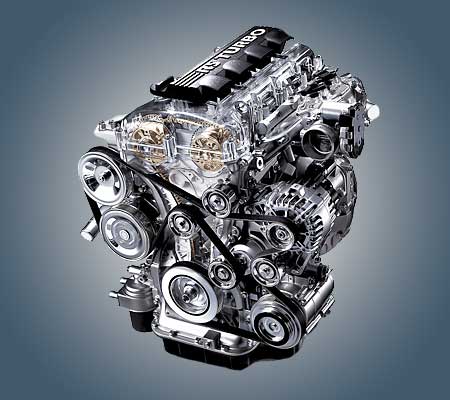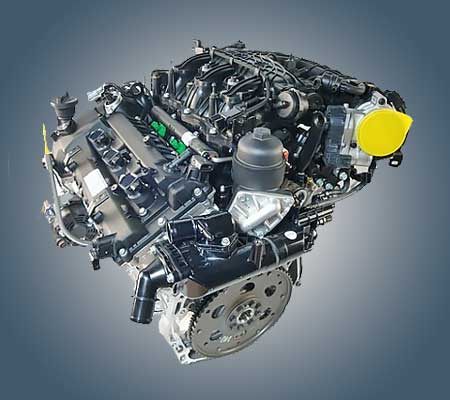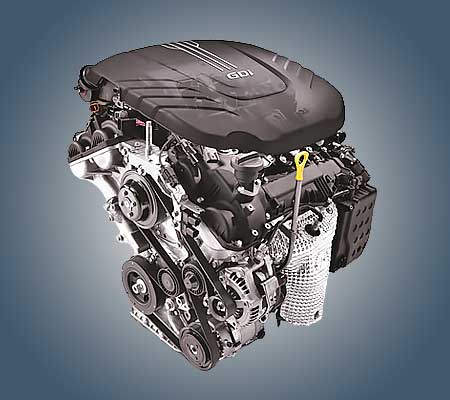
Hyundai Genesis engines
Content
The manufacturer positions its creation as a business-class sports sedan. In addition to the classic sedan, there is also a two-door coupe. In 2014, an updated model was released, it is noteworthy that from that moment on, the Hyundai brand emblem disappeared from the Genesis, now the Genesis brand badge was placed here. This car made a kind of revolution for the Korean auto industry, which before the Hyundai Genesis was not taken seriously. It is unlikely that anyone could have imagined that Korea could make a luxurious and powerful car that would impose competition on experienced segment leaders.

First generation "Genesis"
The car replaced the Hyundai Dynasty in 2008. To emphasize the sporty character of the new sedan, it was created on a new rear-wheel drive platform. Many experts said that the new Hyundai Genesis looks like models from Mersedes, but no one took this opinion into account and the Korean sedan showed excellent sales figures around the world.
For Russia, this car was equipped with one engine - a gasoline power unit with a displacement of 3,8 liters and a capacity of 290 horsepower. The engine had the designation - G6DJ. This six-cylinder V-shaped internal combustion engine consumed about 10 liters of AI-95 gasoline per 100 kilometers in the combined cycle, according to the manufacturer.


Coupe
In this variation, the car was shown to the public in 2008, and its deliveries to Russia began a year later (2009). This model was equipped with a 2-liter G4KF gasoline engine, which could develop 213 horsepower. This is an in-line four-cylinder four that consumes about 9 liters of AI-95 gasoline per 100 kilometers.


Watch this video on YouTube
Restyling of the first generation Hyundai Genesis
The updated version supplied to Russia received the same V6 G6DJ engine, it only had a changed injection system, which now made it possible to remove even more impressive 330 horsepower from the engine.


Watch this video on YouTube
Restyling of the first generation coupe
Externally, the car has been updated, and work has been done on its interior decoration. In the restyled version, they tried to eliminate all the minor flaws in the first generation of the car. The power of the G4KF engine was raised to 250 horsepower.


Second generation "Genesis"
The new car has become even more stylish and solid, it is simply "stuffed" with technological solutions for the convenience of both the driver and passengers. The model looks very good. Under the hood, there can be a G6DG (V6) three-liter gasoline engine that develops up to 249 horsepower (10 liters per 100 kilometers) or a G3,8DJ 6-liter gasoline with a capacity of 315 horses. This V-shaped “six” consumes about 10 liters of AI-95 gasoline per 100 kilometers in the combined cycle.


Technical data of engines
| ICE name | Working volume | Power | fuel type | Number of cylinders | Cylinder arrangement |
|---|---|---|---|---|---|
| G6DJ | 3,8 liters | 290/315 | Petrol | Шесть | V-shaped |
| G4KF | 2,0 liters | 213/250 | Petrol | Four | Inline |
| G6DG | 3,0 liters | 249 | Petrol | Шесть | V-shaped |
Typical faults
Of course, car engines are not ideal, since none have yet been invented in the world. It should be said right away that these are not problematic engines, although there are some nuances.
The G6DG clogs the throttle quickly, also has a tendency to carbonize just as quickly due to direct injection and this will lead, one day, to the occurrence of rings. Periodic adjustment of the valves is required, since hydraulic compensators are not provided by design.


Watch this video on YouTube
The G4KF has proven itself to be a loud motor that sometimes vibrates and makes extraneous sounds. By a hundred thousand mileage, the chain is stretched or the phase regulator fails, the throttle clogs relatively quickly. If you adjust the valves in time, then many problems can be avoided with this motor.
The direct injection G6DJ is prone to carbon deposits quickly. With a solid mileage, piston rings may lie down, and an oil burner will appear. The throttle body can quickly become clogged and the revs will start to float. Approximately once every ninety-one hundred thousand mileage, you will have to adjust the valves, and this is a rather expensive procedure. There are cases when the liners rotated due to oil starvation.



